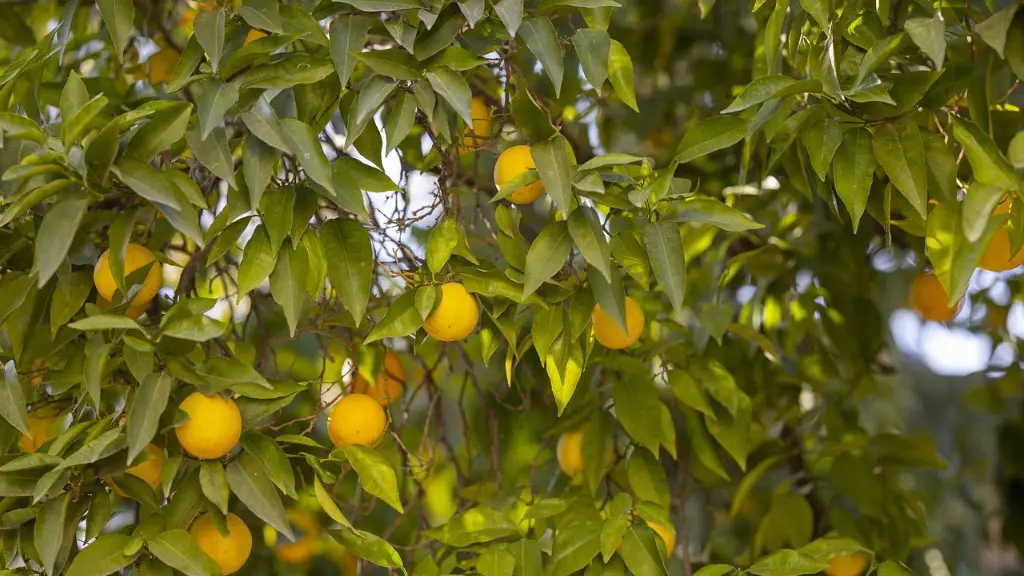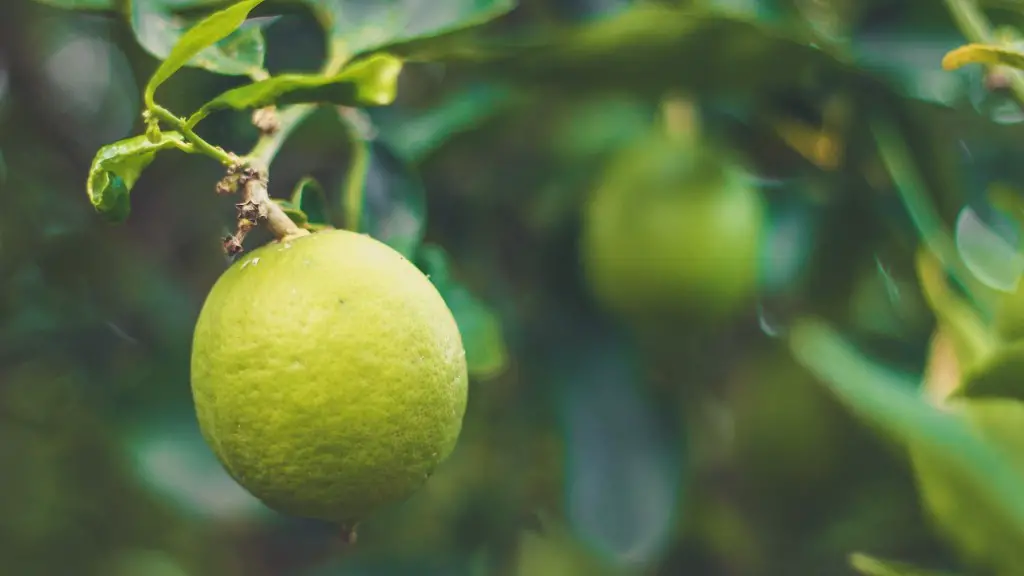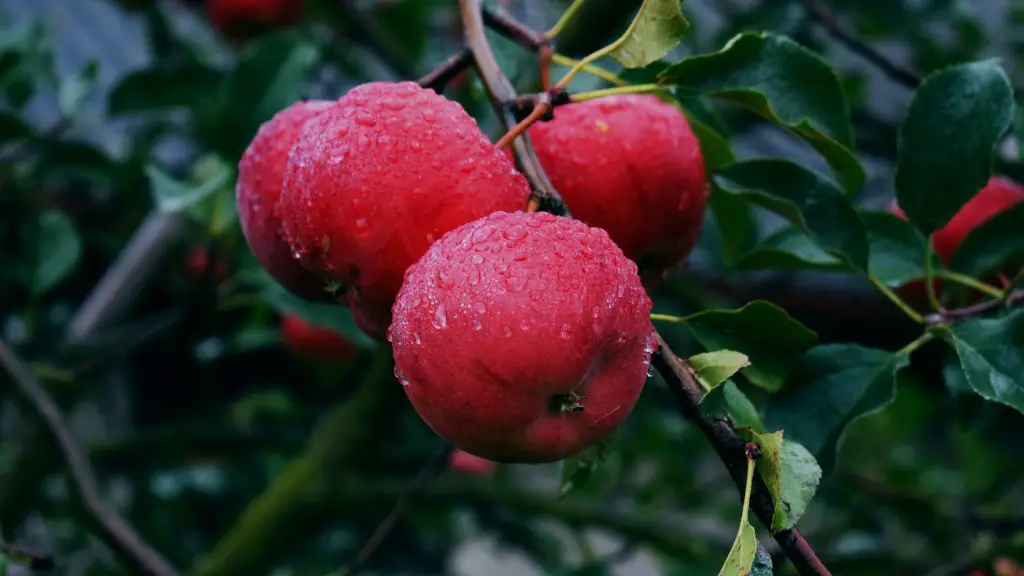Grafting is an effective way to grow a lemon and lime tree. It is a horticultural process involving the insertion of a shoot or scion piece of a desired variety of tree into another tree’s stock. When done properly, the scion grows into a new tree that is a clone of the desired variety. Here is a guide on how to graft a lemon and lime tree.
To begin with, prepare the rootstock of the desired tree variety, such as a strong, healthy lemon plant. Then, select a compatible scion for the graft. When selecting a scion, you should make sure it is healthy and also from the same species as the root stock.
Once you have your rootstock and scion, use a sharp, sterile knife and cut the scion and the rootstock with a downward angled cut. Make sure the cut is clean and precise, and that the surfaces are smooth.
Next, place the scion into the rootstock. Once the scion is in place, it is important to protect it from the elements. This can be done by wrapping the joint with grafting tape or even using a splint to hold it securely in place. Afterward, the graft can then be covered with soil or mulch and watered regularly.
It is then a matter of waiting for the graft to take. This can take anywhere from a few weeks to a few months, depending on the conditions. The graft should be monitored closely to ensure it is getting enough sunlight and water. If the graft is struggling, it can be moved to an environment that is less stressful on the roots, such as an indoor container.
Once the graft has taken, it should be pruned periodically and fertilized. Adding compost or manure to the soil is an effective way to help the tree stay strong and healthy. Finally, to avoid disease, it is important to inspect the tree regularly and look for areas of dead or diseased branches.
Pruning the Lemon and Lime Tree
Pruning is an essential part of maintaining a lemon and lime tree. Pruning helps keep the tree healthy and ensures the best fruit production. In order to prune properly, it is important to understand the basic principles of tree pruning. First, the tree should be pruned when it is dormant or in early spring before the growing season begins. The season for pruning an orange tree is typically from late fall to early winter. Second, always make sure to use sharp pruning instruments and sterilize them to prevent the spread of disease.
A key principle is to cut with a slant, which helps promote the healing of wounds and reduces the risk of decay. When pruning, it is important not to simply hack away at the tree without knowing what should be cut. Pruning should be done with precision and skill to ensure the health and growth of the tree. Also, when pruning, make sure to remove old, diseased branches, but leave the healthy and new growth alone.
Pruning will also help encourage the growth of better quality fruits. It will limit the amount of foliage being produced and instead promote the formation of better fruit buds. To do this, prune bunches of older leaves to promote the growth of young ones. Moreover, keeping the tree canopy open will promote better air circulation and create a healthy environment for the tree.
Finally, be sure to never cut more than one-third of the tree in any given season. Pruning too much can stunt the growth or even kill the tree. Thus, when pruning a lemon and lime tree, it is important to prune smartly and not overdo it.
Pollinating the Lemon and Lime Tree
For a lemon and lime tree to produce fruit, it needs to be properly pollinated. Pollination is the transfer of pollen from the male parts of a plant (pollen sacs) to the female parts of the same type of plant (stigmas). Pollinators, such as bees, transfer the pollen from flower to flower to initiate the pollination process.
The self-pollinating trees are easier to maintain but they do not produce as much fruit as the varieties that need to be pollinated by pollinators like bees. Therefore, if a lemon and lime tree is to be grown in areas where there are not many pollinators, it is important to choose a self-pollinating tree. Otherwise, a bee-pollinated variety should be planted in an area where bees and other pollinators are abundant.
In addition to pollinators, the environment has a huge impact on the pollination process. Temperature and the amount of sunshine can affect the success or failure of pollination. Planting near other plants can increase pollination rates as bees will be attracted to the floral scent and color. If the tree is planted in an area that has a lack of pollinators, then flower bags can be used to help cross-pollinate.
Additionally, hand pollination with an artist’s brush may be necessary. The brush is used to collect pollen from the male part of the plant and then spread it around the female parts of the tree. In any case, the success of pollination is dependent on the availability of pollinators and flowers. Therefore, it is important to make sure the area is suitable for pollination before planting the tree.
Fertilizing the Lemon and Lime Tree
Fertilizing is an important part of maintaining a healthy lemon and lime tree. Fertilizer is important to ensure the tree has the nutrients it needs to grow and produce better fruit. The type of fertilizer used depends on the type of soil and the particular needs of the tree.
Organic fertilizers such as compost, manure, or leaf mold are great for the environment and help promote a strong and healthy root system for the tree. They also help promote better and more diverse microorganisms in the soil. Additionally, organic fertilizers can be used to help reduce the amount of chemical fertilizers and help produce stronger, better-tasting fruit.
Inorganic fertilizers, such as nitrogen, can provide the tree with the macronutrients the tree needs to stay healthy and produce good fruit. But, too much nitrogen can cause an imbalance in the flora of the soil, so it should be used sparingly according to the specific needs of the tree.
The amount of fertilizer used will depend on the size of the tree. The nutritional requirements for a small tree will be different than for a large tree. Fertilizer should be applied in late winter or early spring before the tree begins to leaf out. Moreover, the tree should be inspected regularly to ensure it is getting the proper nutrition.
Protecting the Lemon and Lime Tree
Since the lemon and lime tree is a tropical tree, it can be vulnerable to cold weather, pests, and even diseases. Therefore, protecting the tree is an important part of keeping it healthy and productive. The tree should be inspected regularly for signs of damage and treated accordingly.
If the weather is cold, the tree can be covered with a blanket or a sheet. This will help retain warmth and prevent frost damage. Additionally, the tree should be mulched in order to provide insulation and retain moisture. Mulch should be applied at least a few inches thick and should be checked every few weeks during cold weather.
Pests can also cause damage to a lemon and lime tree. Insecticides and fungicides can help keep pests in check, but it is important to use the products accordingly in order to avoid harming beneficial creatures such as bees and butterflies. Additionally, it is important to inspect the tree regularly to look for signs of pests or disease.
Finally, diseases can affect the health of the tree and reduce the production of fruit. The tree can be treated for disease with the proper fungicides and insecticides. Additionally, keeping the plant in a healthy environment with proper sun, adequate water, and correct soil will help prevent the spread of disease.
Harvesting the Lemon and Lime Tree
Harvesting a lemon and lime tree can be a rewarding experience, but it is important to harvest the fruit at the right time. The fruit should be allowed to fully ripen before it is picked. Thus, harvesting at the right time is essential for producing the best quality fruit.
Fruits should be picked when they are plump, firm, and have a bright, deep color. The fruit should also be easily removed from the tree with a gentle twist. If the fruit is still green it should be left on the tree until it ripens. The longer the fruit has to ripen, the juicier and sweeter it will be.
When harvesting, it is important to avoid bruising and damaging the fruit. Be sure to wear gloves and pick the fruit carefully to avoid tearing or bruising the skin. Additionally, harvest the fruit in a way that leaves the stem intact, which will help extend the shelf-life of the fruit.
Finally, be sure to check the condition of the tree before and after harvesting. If the tree is feeling stressed, be sure to take steps to ensure its health such as providing more water or moving the tree to a more favorable climate. By taking the proper steps, a lemon and lime tree can be harvested to produce a bumper crop of delicious fruit.





